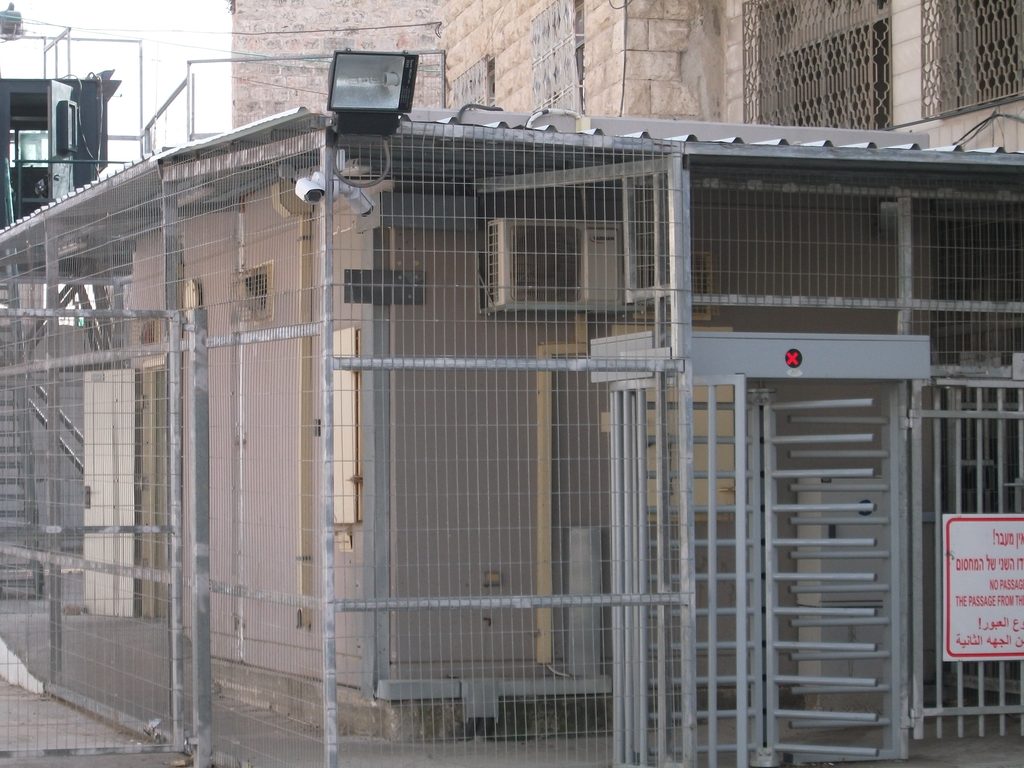14th January 2017 | International Solidarity Movement, al-Khalil team | Hebron, occupied Palestine
According to the theory of realism within the field of international relations, conflict and war is the outcome of an actual threat (a material/military threat). That is, war breaks out when one country is threatening the security of some other country by accumulating military power. It is, in other words, the Hobbesian war against all, where only the most powerful is safe. Now, if one holds such a belief, it is obvious that war/ conflict is a matter of national security. The less powerful seeks safety by military buildup, while the strongest seeks safety by retaliation. If taken to its natural conclusion, realism absurdly claims that “It is the desire of every state, or of its ruler, to arrive at a condition of perpetual peace by conquering the whole world, if that were possible”
Now, the myth of realism has been debunked on numerous occasions by the course of history itself. For instance, as Alexander Wendt points out, if realism did hold true, then why are “500 British nuclear weapons less threatening to the United States than 5 North Korean nuclear Weapons”? But even though the myth of realism is theoretically debunked, the implications of the theory live on in the minds of most citizens. Being caught between competing parties and media outlets, it is almost impossible to remain absolutely objective when assessing the geopolitical landscape of today. Everyone wants to identify the “bad guy.” Everyone wants a clear explanation for who or what started a war. And that goes for Israel too.
However, if we take a step back from the myth, there should be no doubt as to whom is taking the lead when it comes to the power relation between Israel and Palestine. For while Israel is a recognized state with massive military capacity, Palestine is without an army and de facto subjugated by Israel.
But this is not the image portrayed in the media – not here or elsewhere. People want explanations. People don’t like complicated. So, while the situation of Israeli aggression might be very straight forward by an outside observer, it is not so obvious to Israeli citizens. The media and culture has deeply ingrained in the minds and bodies of the people of Israel that they are under constant attack: that all Palestinians pose a very real threat. The vilification of Palestinians breeds hatred and fear in the minds of Israelis and perpetuates the tension and violence here.
And this feeling – this constant feeling of fear and hatred is undeniable here in Hebron. The way the soldiers interact with civilians is full of distrust and suspicion. Now to be fair, the situation here in Hebron has been relatively ‘quiet’ for more than a month now. There has been no continuous stream of teargas or shootings. And there have not been more cases of harassment than usual. What is left are all the incidents that have been normalized, that is, body searches, ID-checks, long lines at checkpoints and the occasional provocative soldier who is showing off to his mates by harassing civilians. Despite the apparent quiet, there is no sense of safety. For we–internationals and Palestinians–know that whatever happens, happens at the mercy of soldiers. That if they have a change of heart, we are at the receiving end. We know that teargas could easily be flooding the streets tomorrow, and we understand why no one feels safe going to sleep. You never know when it will be your house that is raided at night, or when it will be your friend who is dragged away. The recent quiet and stability is fragile, terrifyingly so.
So while realism is just a disproven political theory, it is well alive in Hebron – the mentality of fear and suspicion–the realist vilification of human beings is causing the conflict.

